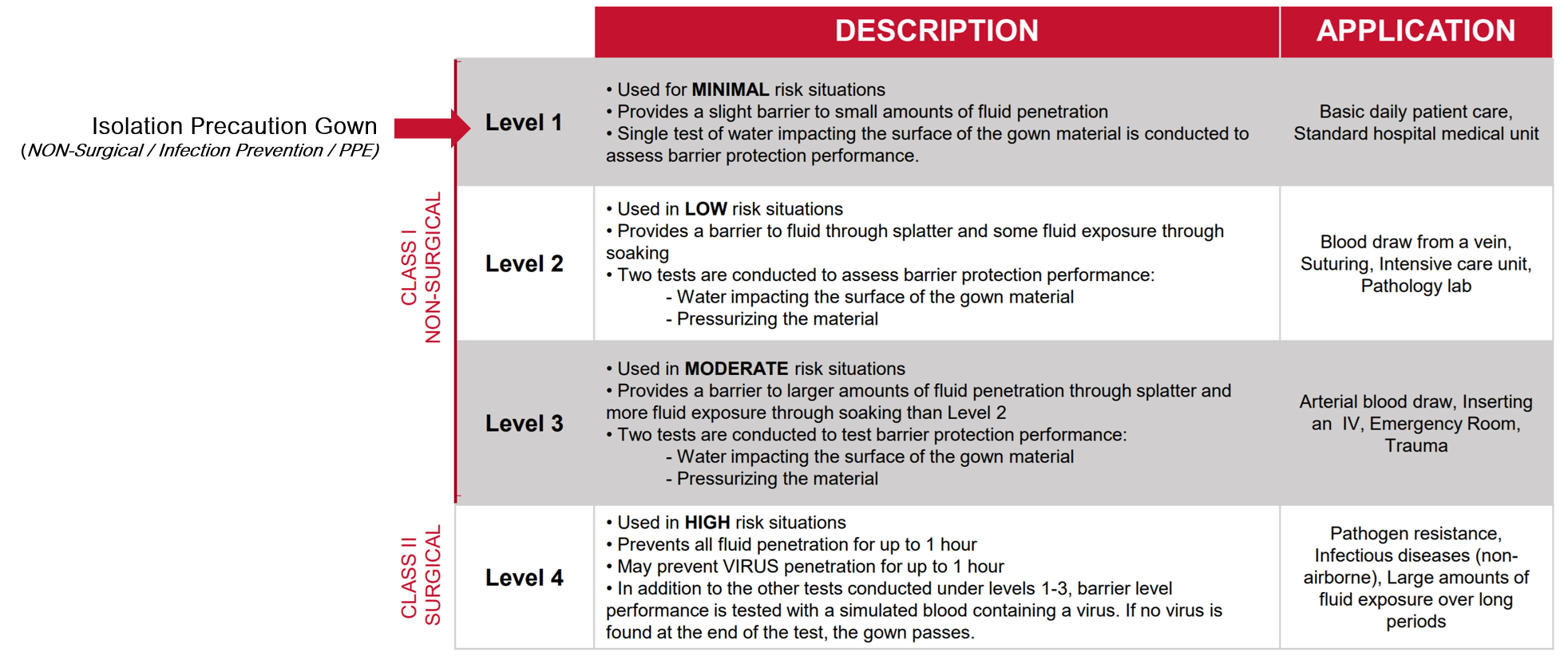ANSI/AAMI PB70 Standards recognized by the FDA
ANSI/AAMI PB70 Standards Classifies a gown's ability to act as a barrier to penetration by liquids or liquid-borne pathogens based on four levels. The critical protective zones for surgical and non-surgical gowns are defined differently by the standard. While the critical zones designate different protective areas for the different gowns, the levels of protection are the same for both surgical and non-surgical gowns.
Mission’s Isolation Gown meets FDA requirements at the Class 1 standard, and the fabric meets level 1 and level 2 standards. The Mission gown is made of 100% Monofilament Polyester (99% polyester and 1% carbon fiber stripe). It is fluid resistant with a static dissipative woven stripe.

GOWN CRITICAL ZONES
|
Critical Zones are defined as the areas where direct contact with blood, bodily fluids, and other potentially infectious material is most likely to happen (Areas A and B). For surgical gowns, this includes the fabric and the construction (sleeve seams, front tie attachment) in areas A and B. The entire gown (Areas A, B, and C), including seams but excluding cuff, hems, and bindings, is required to have a barrier performance of at least Level 1. The back of the surgical gown (Area D) may be non- protective. AAMI liquid barrier standards also apply to surgical drapes.
DOWNLOAD INFORMATION > Isolation Gown Protection Levels PDF
|
|
 |